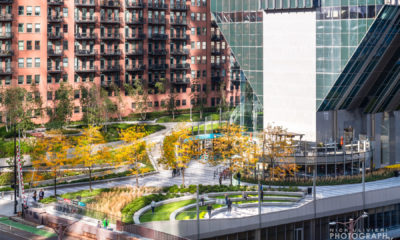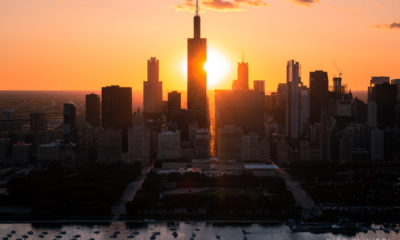
Aurora Borealis over Chicago
The aurora borealis put on a stunning show in Chicago on Thursday, October 10th! A day earlier, NOAA issued a severe geomagnetic storm alert after detecting a major Coronal Mass Ejection (CME) from the sun. As someone who follows people who closely follow space weather (Landon Moeller is a must follow), I knew this could lead to a photogenic display.
I’m a novice when it comes to photographing the northern lights. My only preeviouse experience was back in May. Based on my limited knowledge I was complexity uncertain how strong or vivid the lights would be. What I do know is that these outbursts can vary greatly in intensity. Sometimes the most aggresive forecasts yield little-to-no aurora activity. I tried not to get my hopes to high.
But as darkness descended across Europe and then the East Coast, aurora photos started to flood Twitter. I knew that if the storm’s intensity persisted, it might create a vibrant show above the city. Since I had a photoshoot in the morning, I decided to stay close in hopes of catching the lights with the skyline. I chose 31st Street beach/harbor as my viewing location. It’s about 2.5 miles south of the Loop, and provides a great view over the lake where the sky is naturally darker.
Sidebar: Thanks to a world awash in mobile phones with high-quality cameras and the ability to share photos instantly on social media, we’re more likely to see and hear about these displays than ever before. We’re also at the peak of a solar maximum—the period when the sun is most active and most likely to produce auroral displays.
In other words, these events have always happened (and solor activity is at a maximum right now). But until recently we haven’t been able to capture and disseminate images and forecasts as easily as we can today, which has led to increased coverage and awareness.
Arrival
I got to my chosen spot shortly after 7:00 p.m., and then I waited. At that time I was all alone. I set up my tripod and camera the snapped a photo with my phone. Faint traces of color were already apparent. That’s when the adrenaline started to pump. I began to work on compositions that featured the distant skyline, lake, and foreground rocks waiting for the show to start. And I kept waiting. People started to filter in and the point slowly began to fill.
Then, around 9:00pm, the first (and best) substorm of the night kicked into high gear. Greens and reds shimmered over (and even on) Lake Michigan. For a few brief minutes, the geomagnetic storm was strong enough to power through the light pollution of the skyline just a few miles away. While the colors appeared more vivid on camera, the shapes and textures were visible to the naked eye during the height of the substorm.
I could see the red colors starting to brighten over the lake with the naked eye. The low-altitude greens weren’t as saturated as they are in photos, but they appeared as ethereal clouds. The best way I can describe their color is like glow-in-the-dark paint that isn’t glowing. Think white with a faint yellow-green tinge. You could barely see it, but knew something was there.
I’d been taking frames periodically to watch the lights evolve, but as they quickly brightened I started taking photos with more pace. I focused on images of the skyline as the colors began to shine over the city. I was elated. By this time 75 people had gathered to watch. For about 10 minutes, I panned my camera back and forth between the skyline and Lake Michigan taking dozens of frames at multiple exposure levels. Then the lights faded as quickly as they erupted. I left soon after it was apparent another substorm wouldn’t arrive for a while. Plus, I had an early photoshoot the next morning.
Settings
For the most part I used my 14mm Nikon f/2.8 wide angle lens. I shot wide open (2.8) at around ISO 2000. My shutter speed ranged from .6 seconds to 3 seconds based on light pollution and/or the brightness of the aurora. Due to the extreme contrast in bright and dark areas I wanted to ensure I had the right exposures to edit.
I didn’t get many unique photos, but here are a few more.










